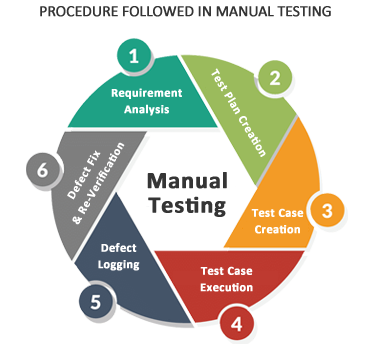Manual Testing
Manual testing is a hands-on approach to evaluating software without automation tools. QA engineers simulate real user actions to execute test cases and uncover defects in functionality, usability, and end-to-end behavior. Relying on critical thinking, creativity, and domain knowledge, manual testing validates requirements and user experience. Core methods include functional, integration, regression, and user acceptance (UAT) testing. While more time-intensive, it’s essential for catching UI/UX issues and edge cases that automated checks often miss.

